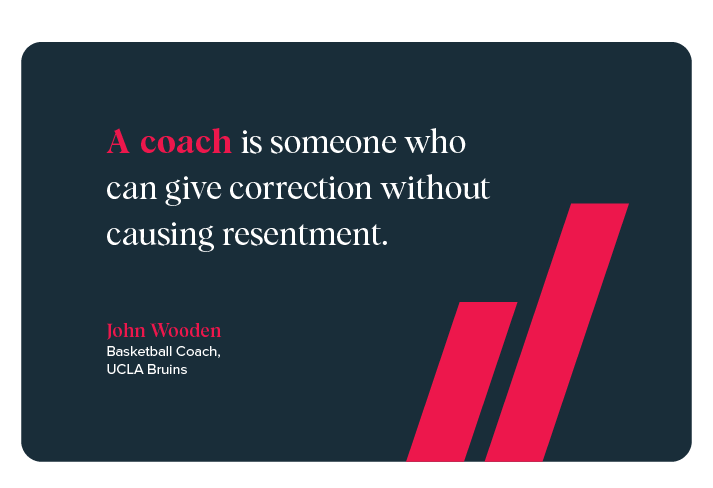Constructive feedback is crucial to a good relationship between manager and employee.
Regardless of role, level, or industry, managers can improve employee satisfaction with the feedback process. According to a survey conducted by Officevibe, companies that employ effective employee feedback see 14.9% lower turnover rates, and employees are 30x more likely to be actively engaged at work.
But people don’t change until they see a reason to do so. Feedback is about helping the other person find the reason first — and the response will follow. Managers should go into the feedback process being very clear about their intention: to leave people more inclined, more able, and more motivated to do the job.
But even with the best intentions, managers may not deliver feedback well in practice, and employees may not receive it well. While you can’t control how others respond to feedback, you are responsible for offering it in the best way possible, maximizing your chances of making a positive impact on the relationship, performance, and employee satisfaction.
What is feedback?

Feedback is a conversation that shares a message that one person feels is important for another person to hear. It can be developmental (though feedback isn’t criticism), or offer praise or recognition. Feedback has to be timely: fairly close to an event (though not necessarily in the moment), frequent, and consistent.

The relationship between feedback and psychological safety
Feedback is both most effective in an environment of psychological safety and promotes psychological safety.
Psychological safety is not about building relationships at all costs by avoiding difficult conversations or feedback. It’s about developing a culture where team members feel comfortable being themselves and sharing, asking for, and receiving critiques and suggestions about their performance daily.
Why giving feedback improves employee satisfaction
Employees want more feedback. People in all kinds of jobs desire role clarity, skill development, and the opportunity to be their best selves and perform well at work.

When managers come to the feedback process to collaborate with the employee, keeping in mind the goals of growth and empowerment, that’s the ideal starting place for a positive interaction.
Sometimes, employees will ask for feedback, but usually, you have to give feedback based on something you’ve observed. If the feedback is unsolicited, there are two main things to keep in mind to maximize the chances of it being well-received:
- Are you in a state of mind where your positive regard for the recipient and desire to help are evident, or might they pick up on some judgment or other negative motivation?
- What does the situation look like from their point of view, and what can you do to make the feedback resonate more with them?
Why do managers avoid difficult feedback?
- Fear of the other person’s reaction
- There are easier and faster options
- Fear of being wrong
- Fear of hurting others
- Don’t know how
- Don’t have enough time
- Hope the issue resolves itself
- Previous bad experience
- Waited so long that it will be difficult
How managers can set the stage for effective one-on-one feedback
Get to know each other
Get to know each other at an individual level. You can wait for the relationship to develop over time, or employ some strategies to speed up trust by intentionally spending time getting to know each other.
Create rules of engagement
Define your shared values and rules of engagement and communication to ensure that everyone has a voice not just a seat at the table.
Seek feedback from others first
Create a two-sided contract about feedback by authentically soliciting feedback first. Ask what they need from you as their manager to get the best out of them, including direction, support, and development, and what you may be doing that gets in the way.
Then, listen with the intent to learn, not to just confirm what you already think. You also need to take action on the feedback and review progress in future meetings.
Receive feedback well
The manager-employee relationship is a two-sided contract where you both play by the same rules of engagement. If you expect an employee to accept and learn from feedback, you have to do the same.

Be willing to be wrong
Be the first to hold your hand up when you get something wrong. Don’t defend the indefensible.
How managers can give difficult feedback effectively
While compliments can be easy, some feedback is difficult. Nobody wants to be the bearer of bad news. And nobody relishes putting others on the defensive.
On the other hand, whatever you tolerate without speaking up implies your approval — be it undesirable behavior or underperformance. This is why it’s so important to give feedback, even when it might be difficult.
There are ways to approach difficult feedback that make it easier and more likely to produce a positive result.
First, make sure there’s mutual agreement about what’s expected, and that the expectations are realistic.
Then, start by asking questions. Giving the employee the chance to speak first often reveals that they’re more unhappy with the results than you are! They may also come up with better actionable solutions than you might have had, and readily take ownership of the solution because it was their idea. As a manager, none of the reasons the employee gives for their poor performance or lapse in behavior should come as a surprise; you should spend enough time with them to know what’s going on in their life.
Next, when giving difficult feedback, consider the ‘BIF Model’: behavior, impact, and feelings.
- Behavior: Objectively describe the behavior you see, free from judgment. For example, if you see their behavior as indecisive, describe how you can tell they want to keep their options open.
- Impact: Describe the impact of the behavior in a way that the recipient will care about, which might be different than what you care about. See the next section to learn how to do this.
- Feelings: State the way you are feeling, for example, frustrated, worried, anxious, puzzled, hurt, scared, etc. But watch out for judgments masquerading as feelings. Saying, “I feel that you are doing that intentionally” is not a feeling, it’s an accusation.
Finally, remember that the goal of feedback is to open a conversation, not to get the other person to change. Work hard to keep your suggestions out of the initial feedback. When you describe the impact in a way that speaks to the recipient’s values, they will naturally want to do something about it. As you continue in the conversation, the employee will probably seek your actionable advice about what to do differently, and that’s the time to offer your suggestions.
How to best deliver feedback tailored to your audience
To open a good dialogue, feedback has to resonate with the receiver. This means you need to know your audience and what will make them feel seen and understood.
For example, the director who walked into the room holding a spreadsheet and thanked David (below) for how much money he had brought in this month failed to understand that David’s main focus is helping others. Thanking David for how many clients he had helped would have resonated much more deeply.
Rather than saying something in a way that would resonate with you, adapt your style of delivery to the person in front of you, while remaining authentic. Each person may require a different style of feedback, dependent on their personality type.
For a deep dive into the Core Strengths model of personality types and the three primary motivations, read our blog How to Make Workplace Coaching Successful.
Here are some examples of employees with different personalities and tips for giving them feedback:

Victoria (Motivated by task accomplishment and achieving results)
- Be clear, direct, positive, and brief.
- Link to impact on performance and results.
- Deliver with energy and confidence.
- Agree on actions and identify opportunities and challenges.

David (Motivated by the protection, growth, and welfare of others)
- Be open, honest, one-to-one, personal, and sincere.
- Be soft spoken and calm.
- Link benefits or costs to the effect on others.
- Don’t assume that silence or tentative responses equate to agreement or acceptance.

Lance (Motivated by practical analysis and establishing order)
- Be calm, clear, complete, and correct.
- Communicate in an unemotional way, in even voice tones.
- Present supportable facts calmly and methodically.
- Be comfortable with periods of silence.
- Remain objective, logical, fair, and in control of emotions.

Kent (Motivated by actively building other people up)
- Be direct, simple, friendly, and action-oriented.
- Be positive, enthusiastic, and forward thinking.
- Link benefits to the impact on results and the needs of others.
- Avoid overemphasizing details.

Vince (Motivated by strategically achieving results)
- Be direct, logical, assertive, and objective.
- Demonstrate understanding of the situation and get to the point quickly.
- Confidently communicate relevant facts in a methodical way.
- Link benefits or costs to the long-term strategy and goal.

Janice (Motivated by self-reliance and helping others become self-reliant)
- Be calm, patient, open, and genuine.
- Be considerate and respectful of their space and processing time.
- Ask for their opinion before sharing yours.
- Link benefits or costs to the long-term development and growth of others.

Susan (Motivated by flexibility and adapting to other people)
- Be open and transparent.
- Link benefits or costs to impact on the team, collaboration, and innovation.
- Show that you have looked at the situation from multiple perspectives.
- Be willing to flex your approach, depending on their response.
You can improve employee satisfaction with the feedback process
And Core Strengths can help. We have the tools to help you discover and maximize your own and your employees’ motivations and strengths, which will make the feedback process more effective:









